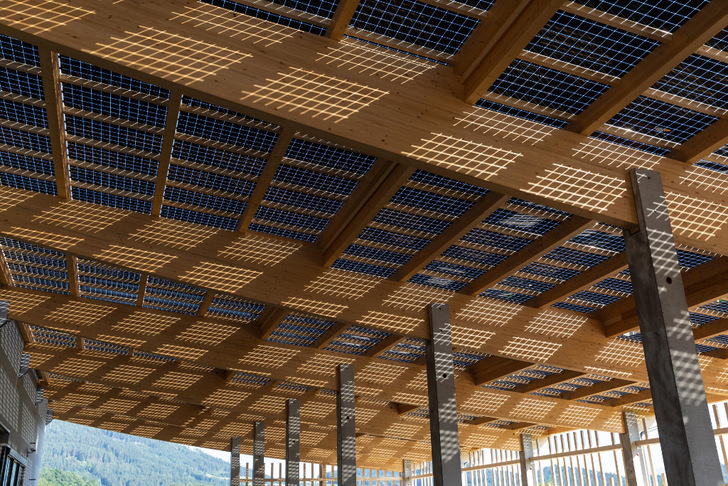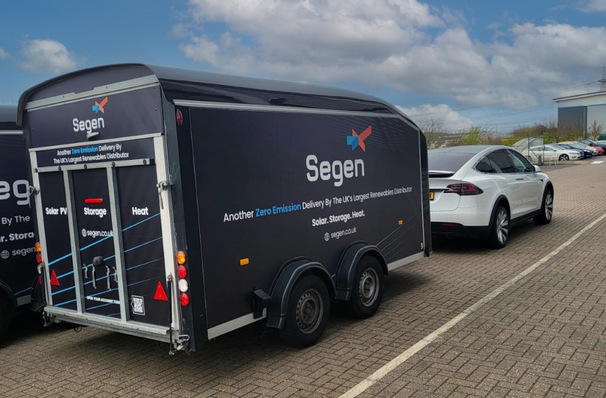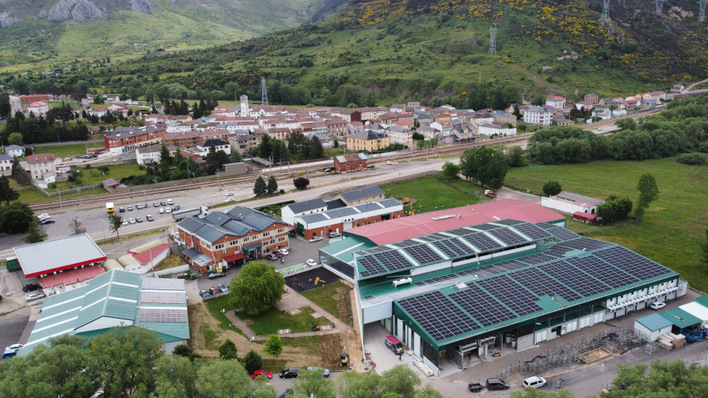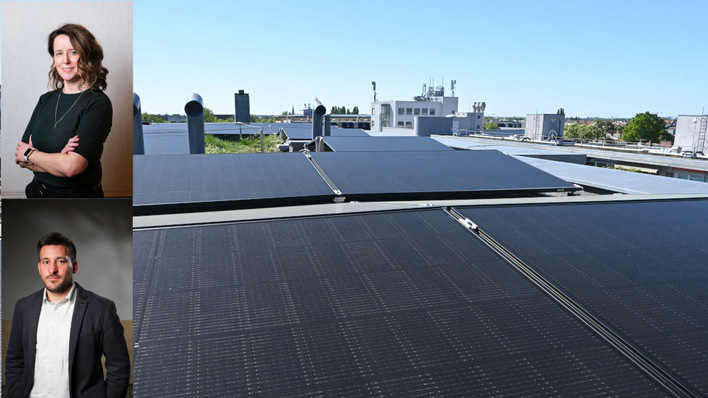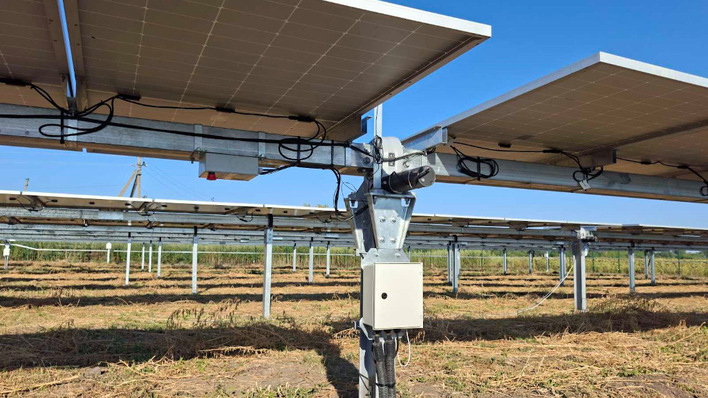The manufacturer of solar and heating technology Sonnenkraft is building a large solar shed roof at the site of its module production. This is cantilevered onto the south-west façade of the production building and is designed in the form of a monopitch roof. The roof construction is made completely of wood and is covered with 800 semi-transparent, bifacial double glass modules from the own production of Kioto Solar – Sonnenkraft’s module brand.
Module production with self-generated solar power
With the shed roof, Sonnenkraft not only creates additional storage space. The company uses the electricity from the modules directly in the production of solar panels and fresh water stations. Together with the large 500-kilowatt system on the company roof and the EV carport next to the building, Sonnenkraft can cover three quarters of the production at the site in St. Veit an der Glan with its own solar power produced locally.
The new solar covering of the roof alone, with an area of 1,650 square metres, supplies 325,000 kilowatts of solar power every year. This is also thanks to the bifacial solar technology used. This means that the modules also harvest the sun’s energy on the back and convert it into electricity.
Modules for 300 self-consumption systems every day
In this way, the company achieves that the CO2 footprint of the modules it produces becomes smaller and smaller. In addition, Sonnenkraft gets a storage area that pays for itself. This is because the solar power from the newly installed modules reduces the amount of electricity the company has to purchase from the grid and thus also the operating costs for the production facility in Carinthia. The storage area became necessary because Sonnenkraft is currently doubling its production capacity of solar modules from 180 to 340 megawatts. The company will then be able to produce 3,000 modules every day. In purely mathematical terms, that is enough panels to build 300 self-consumption systems every day.
The solar roof was an obvious choice
Originally, a construction with tarpaulins was planned. However, the company quickly abandoned this idea because it was not an optimal solution in terms of durability and design. „We produce energy from Austria for Austria and Europe and see enormous growth potential for photovoltaic modules in domestic production with quality. So what could be more obvious than to equip the storage area with double-glass modules manufactured in our own factory?“ explains Alfred Mölzer, Managing Director of Sonnenkraft, the decision.
Using already covered areas
With the installation, Sonnenkraft also shows an innovative idea of how solar modules can be installed as beautifully and intelligently as possible. Above all, Sonnenkraft also shows how previously unused surfaces such as façades, car parks, warehouses and roofing can be put to better use. „We offer innovative solutions so that, first and foremost, already covered surfaces can be used to generate photovoltaic electricity,“ emphasises Peter Prasser, Managing Director of Sonnenkraft. He points out that Kioto Solar’s double-glazed panels can be used to equip terraces, fences, e-carports or even façades with photovoltaic modules that supply energy and save costs. (su)
See also: PV Austria organises PV and storage conference in Vienna in October


